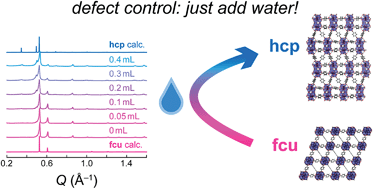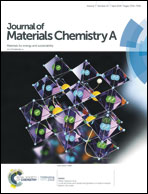Engineering new defective phases of UiO family metal–organic frameworks with water†
Abstract
As defects significantly affect the properties of metal–organic frameworks (MOFs)—from changing their mechanical properties to enhancing their catalytic ability—obtaining synthetic control over defects is essential to tuning the effects on the properties of the MOF. Previous work has shown that synthesis temperature and the identity and concentration of modulating acid are critical factors in determining the nature and distribution of defects in the UiO family of MOFs. In this paper we demonstrate that the amount of water in the reaction mixture in the synthesis of UiO family MOFs is an equally important factor, as it controls the phase which forms for both UiO-67(Hf) and UiO-66(Hf) (F4BDC). We use this new understanding of the importance of water to develop a new route to the stable defect-ordered hcp UiO-66(Hf) phase, demonstrating the effectiveness of this method of defect-engineering in the rational design of MOFs. The insights provided by this investigation open up the possibility of harnessing defects to produce new phases and dimensionalities of other MOFs, including nanosheets, for a variety of applications such as MOF-based membranes.



 Please wait while we load your content...
Please wait while we load your content...